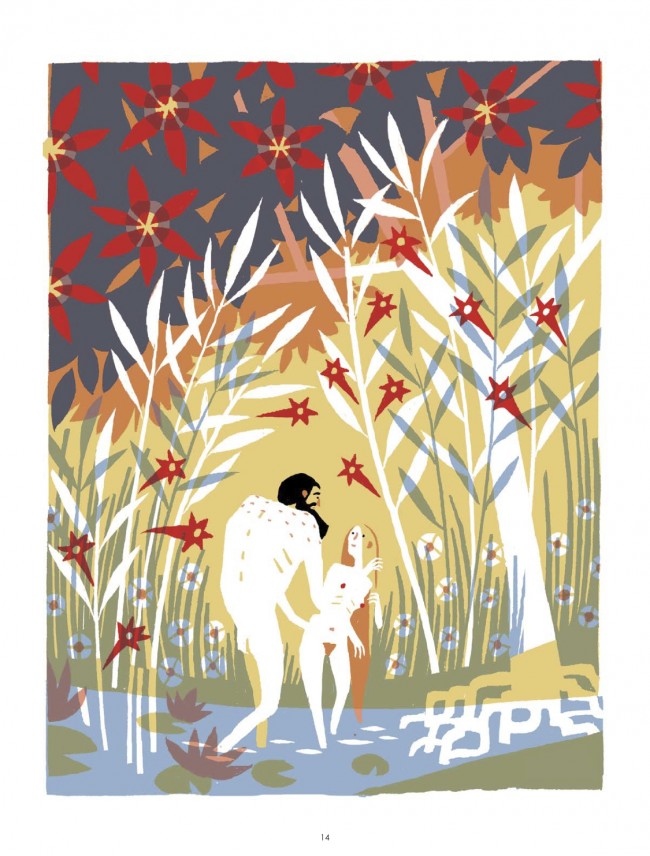The first moment — but certainly not the last — that made me stop reading How to Be Happy, turn back the pages, and immediately re-read them came early. “In Our Eden”, the lead-off piece in Eleanor Davis’s masterful new collection of short stories, concerns a back-to-nature commune driven to dissent and dissolution by its founder’s purity of vision. Some members chafe at the convention by which every man is called Adam, every woman Eve. Others fall away when the leader, a towering and barrel-chested figure with a ferocious black beard like something out of a David B. comic, takes away all of their prefab tools. The rest depart when he insists they neither farm nor kill for food, literalizing and reversing the Fall’s allegory of humanity’s move from hunter-gatherer to agrarian societies. At last it’s just this one Adam and the Eve he loves. By the next time we see them, Adam’s gargantuan physique has been pared away, his ribs visible, his nose reddened for a sickly effect, demonstrating Davis’s remarkable ability to wring detail and expressive power out of the simple color-block style of the piece. He comes across Eve, nude and stork-skinny, washing her long hair in a river. He goes to her, nude himself. “I’m ready for the bliss to come,” he says right to us in one of the recurring panels of first-person narration that have been peppered through the comic. They embrace. “I’m ready for the weight to lift.” They kiss.
I turned the page, curious as to how the story would end. Some final irony? Some subtle but biting indictment of utopian folly? A widening of the view to deny the lovers centrality in their world? None of the above: the story had already ended. The build-up I’d read into it — a crescendo of extremism that would end with Adam’s hubris exposed and exploited — didn’t exist. The easy climax, the stacked-deck scenario so common in stories about true believers in which author and audience get over at the expense of the characters when the latter are made to look foolish for foibles the former recognize instantly, never comes. The climax had come two pages before, when I turned from one page to the next and reached a splash-page image of the moment when Eve turns to see her Adam. This moment of connection is the story’s resolution. The use of Adam and Eve’s human bodies to communicate to one another, to seek the bliss that’s coming, to lift that weight, is the image Davis wants us to leave with. No moral, no punchline, no muted epiphany — discarded along with all the other distractions, they leave only Edenic bliss behind.
I reviewed Eleanor Davis’s masterful comics collection How to Be Happy for The Comics Journal.
Tags: comic reviews, comics, comics reviews, Comics Time, Eleanor Davis, Fantagraphics, How to Be Happy, reviews, The Comics Journal

